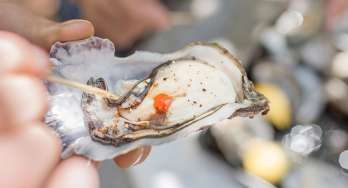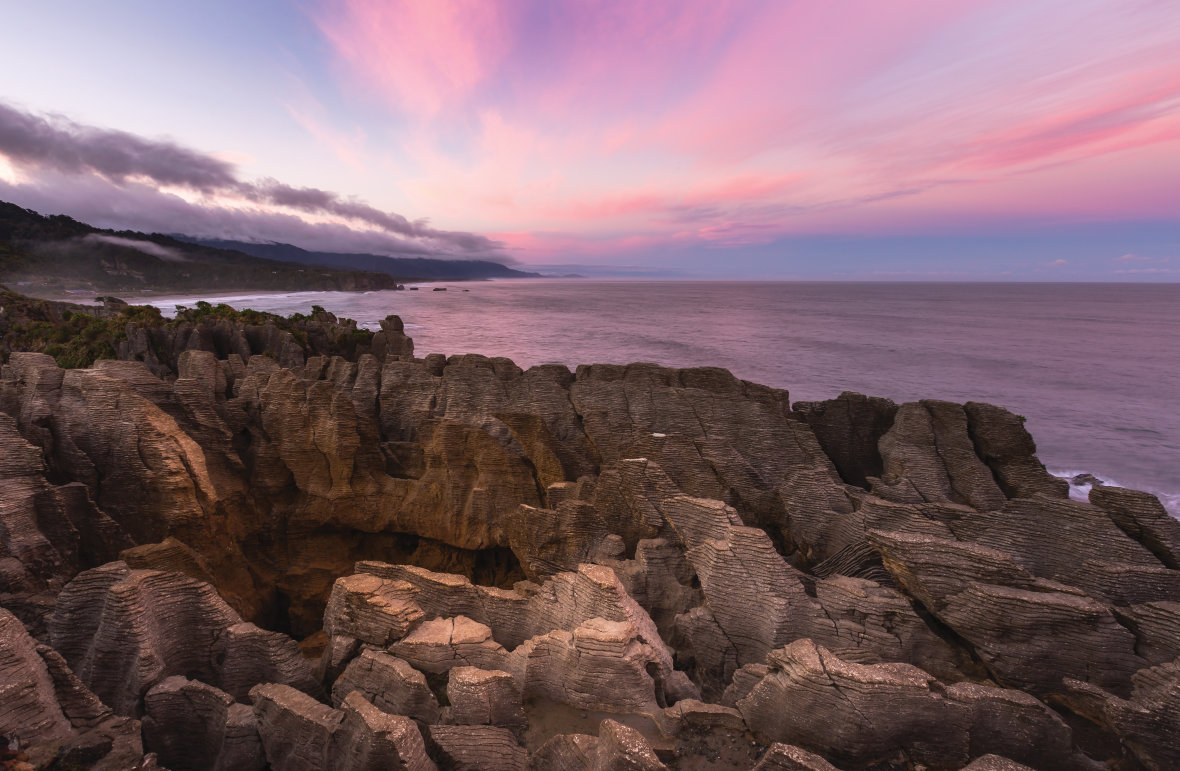


Join thousands of fellow campervan travellers
Sign up for our Britz newsletter to receive inspirational travel content and awesome deals, and we'll send you a copy of our Ultimate RV guide!
Thanks
Please confirm subscription in your email.
How long should I spend at the Pancake Rocks?
Most visitors spend 45 minutes to an hour exploring the site. The well-maintained loop track is short and easy, but you’ll want time to enjoy the blowholes, especially if you arrive during high tide.
For photographers or those keen to spot local seabirds, the cliffs and surrounding vegetation also invite a more leisurely pace. Many visitors end up staying a few hours, taking time to enjoy the interpretive panels and the ever-changing coastal light.
How are the Pancake Rocks formed?
The Pancake Rocks’ geology began over 30 million years ago. Layers of limestone and sandstone were deposited on the ocean floor during a time when much of this area was submerged beneath the sea. These layers built up slowly over time, compressed and cemented by natural forces. As tectonic movements pushed the land upwards, the once-submerged seafloor was gradually raised above sea level, forming the rugged coastline we see today.
Once exposed, the rocks faced the full force of the West Coast’s weather and waves. Rain, wind, and the relentless action of the ocean began to erode the rock, selectively wearing away the softer sandstone and leaving the harder limestone behind. This erosion created the unique stacked appearance of the formations — the ‘pancake’ look that makes them so distinctive.
This ongoing natural process still shapes the coastline. Over time, the blowholes and layered stacks will continue to evolve, revealing new patterns and adding to the wild beauty of this famous site.
How to get to the Pancake Rocks
The Pancake Rocks in Punakaiki are on New Zealand’s West Coast, within Paparoa National Park.
-
From Greymouth: 45 minutes (44 km) north on SH6.
-
From Westport: 50 minutes (57 km) south on SH6.
-
From Hokitika: 1 hour 30 minutes (105 km) north via SH6.
The coastal drive is a highlight, offering lush rainforest, rugged cliffs, and sweeping sea views.
Best time to visit Pancake Rocks
-
Spring (Sep – Nov): Mild weather, bright coastal greenery, and fewer visitors.
-
Summer (Dec – Feb): Warm and popular, but can be busy.
-
Autumn (Mar – May): Cooler temperatures, less crowded, and beautiful lighting.
-
Winter (Jun – Aug): Quieter and often dramatic — rough seas make for impressive blowhole displays, though weather can be wet and chilly.
The best time to visit is during high tide, when the Punakaiki blowholes are most active. Plan to arrive 30–60 minutes before high tide for the full effect. Check local tide charts to help plan your visit.

Weather at Pancake Rocks
The weather is mild but changeable, with frequent rain and strong coastal winds. Bring a rain jacket and dress in layers to stay comfortable year-round.
Best place to park your campervan at the Pancake Rocks
The best parking for campervans is at the Punakaiki Visitor Centre car park, right across from the entrance to the Pancake Rocks walk. It’s free, has toilets and picnic areas, and is close to local cafes — perfect for a short stop or a relaxed break.
Campgrounds near Pancake Rocks
- Punakaiki Beach Camp – A beachfront site close to the Pancake Rocks, with powered campervan spots and easy access to the beach.
-
Greymouth Seaside TOP 10 Holiday Park – About 45 minutes south, this larger park offers full-service facilities and powered sites — ideal if you’re heading down the coast.
